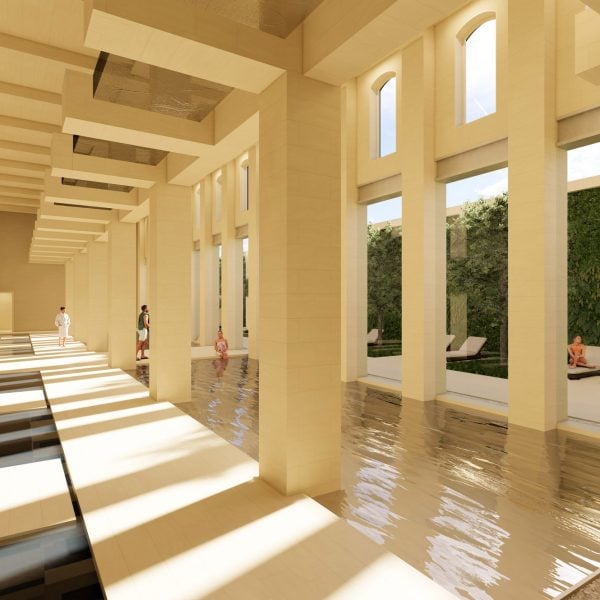Dezeen School Shows: a spa inspired by the local landscapes and architecture of Georgetown, Washington DC, is included in this school show by students at Corcoran School of the Arts and Design.
Also included is a co-living space intended to combat loneliness in young people and a wellness centre created according to biophilic design principles.
Institution: The George Washington University
School: Corcoran School of the Arts and Design
Course: Interior Architecture: Studio 5 – Graduate
Tutor: Christina Filipescu
School statement:
“The Interior Architecture Master of Fine Arts (MFA) at the George Washington University’s Corcoran School of the Arts & Design in Washington, DC, is the only Council for Interior Design Accreditation-accredited program in the United States’ capital.
“It is designed for students who pursued a bachelor’s degree in a field other than interior design, interior architecture or architecture and are looking to follow a studio-based curriculum that will teach various aspects of interior design, theories and technicalities.
“We believe in fostering a community that encourages creativity and pushes the boundaries of design with an emphasis on conceptual thinking and the design process.
“See Corcoran’s end-of-year show here.”
The Haven – A Sanctuary Retreat by Veronica Donaton
“The Haven is a holistic wellness retreat designed as a sanctuary for users seeking withdrawal from stressors, thus allowing their bodies and minds to be nourished and guided towards rest and rejuvenation.
“Following patterns of biophilic design, The Haven provides refuge located and nestled deeply within nature symbolising the sanctuary’s role for protection, safety and nourishment.
“Additionally, interior and exterior refuge spaces are enhanced with varying levels of protection throughout each programming zone acting as a smaller intimate portion of a larger space.
“The refuge areas ultimately provide a calmer experience to optimise and support healing and restoration.”
Student: Veronica Donaton
Course: Interior Architecture: Studio 5 – Graduate
Tutor: Christina Filipescu
Email: vdonaton[at]gmail.com
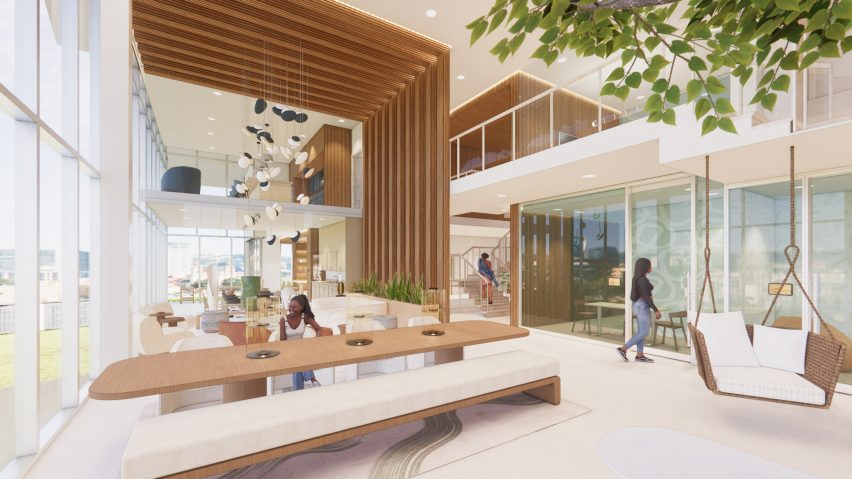
Reverie, A Female Youth Art Centre by Taylor Sallis
“Reverie isn’t just another art centre, it’s a lifeline for girls in Southwest, Washington DC.
“In a community grappling with tough realities like financial and societal pressures, Reverie offers a cosy escape.
“Here, girls can ditch the labels of daughter or student and just be themselves, splashing colours on canvases or sculpting dreams into reality.
“It’s not just about art – it’s about finding strength in self-expression and bonding over shared struggles.
“Reverie isn’t just a space – it’s a hub of empowerment, giving DC’s young women the tools to thrive, one brushstroke at a time.”
Student: Taylor Sallis
Course: Interior Architecture: Studio 5 – Graduate
Tutor: Christina Filipescu
Email: sallis.taylor[at]gmail.com
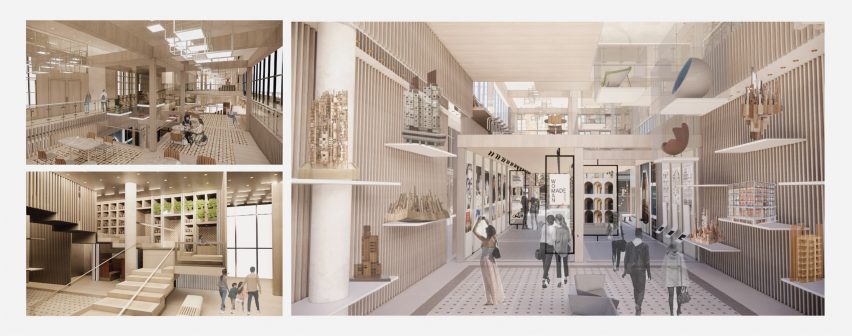
The Agora, New Centre for Architecture and Design by Chryssoula Pentheroudakis
“Alongside professional associations and museums dedicated to the promotion of architecture, the New Centre for Architecture and Design does not fall under any pre-defined space typology.
“It is a hub that invites reflection and exploration, a place for learning and sharing, a place of playful curiosity and a place like no place.
“It is a mixed-use, multi-layered platform that democratises design by rendering it accessible to a wider audience – bringing together cultural, recreational and communal spaces under the overarching concept of assembly: exhibition, meeting, maker and library spaces blend with a large, accessible café area within a modular grid system, where columns and planes can be freely rearranged to control scale and circulation.
“Modularity and transparency within an open plan are deployed to support a free, flexible space design that is adaptable to occasion and exhibition needs.
“At the heart of the design lies the central gathering area of the agora – in a sense, the space program revolves around this ancient Greek notion of a designated public space that enables a democratically minded dialogue around human-centred values and equitable design.”
Student: Chryssoula Pentheroudakis
Course: Interior Architecture: Studio 5 – Graduate
Tutor: Christina Filipescu
Email: pentheroudakis[at]ipvanguard.com
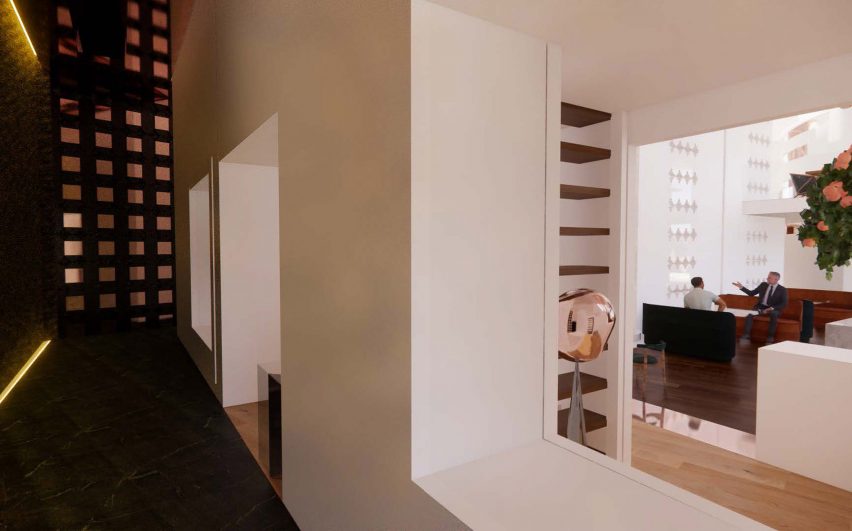
Sufi Salon by Tirajeh Tahvildar Akbari
“Nostalgia is the feeling associated with remembrance of the past that keeps us connected to the pleasant memories that we once cherished.
“It appears as nostalgic feelings happen in a nested repetition loop as if one memory sparks the remembrance of another.
“In the process of immigration, nostalgia is more than a sentimental flashback – it is the bridge between the past and the present, and can be used as a coping mechanism in times of hardship.
“Sufi Salon is a place of love, knowledge, community, good food and storytelling for Iranian intellectuals who share the love of Persian literature, poetry and culture.”
Student: Tirajeh Tahvildar Akbari
Course: Interior Architecture: Studio 5 – Graduate
Tutor: Christina Filipescu
Email: tirajeh.tahvildarakbari[at]gwu.edu
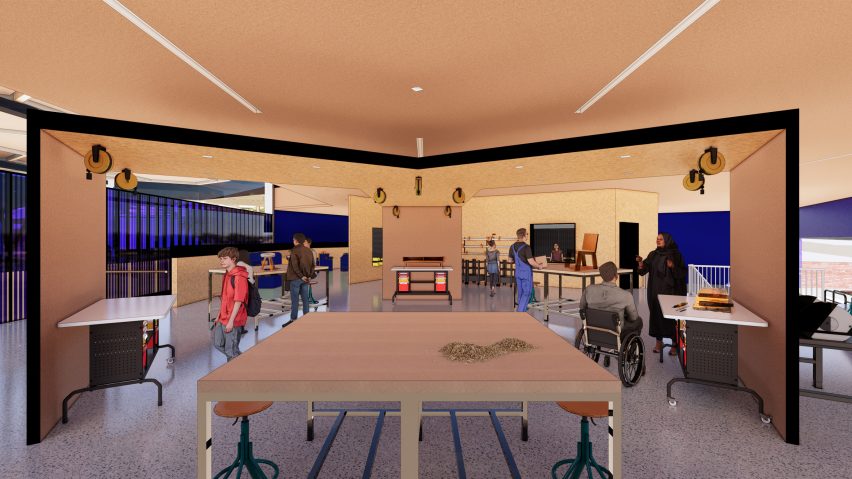
Creating Space, A Maker Community by Josef Beal
“Creating Space is a maker community – an engaged space for neighbours to gather, learn and explore through making.
“In a community away from the bustle of Washington DC, Creating Space offers programming for everyone.
“It is a safe space for cyclists along the Metropolitan Branch Trail to stop for coffee or food in the cafe.
“Eckington community members, especially the elderly and children, can participate in a learning environment or borrow tools from the tool library.
“Makers from around DC can work with wood, 3D print, sew and create in dedicated spaces – all of these activities are visible and celebrated at Creating Space.”
Student: Josef Beal
Course: Interior Architecture: Studio 5 – Graduate
Tutor: Christina Filipescu
Email: josefcbeal[at]gmail.com
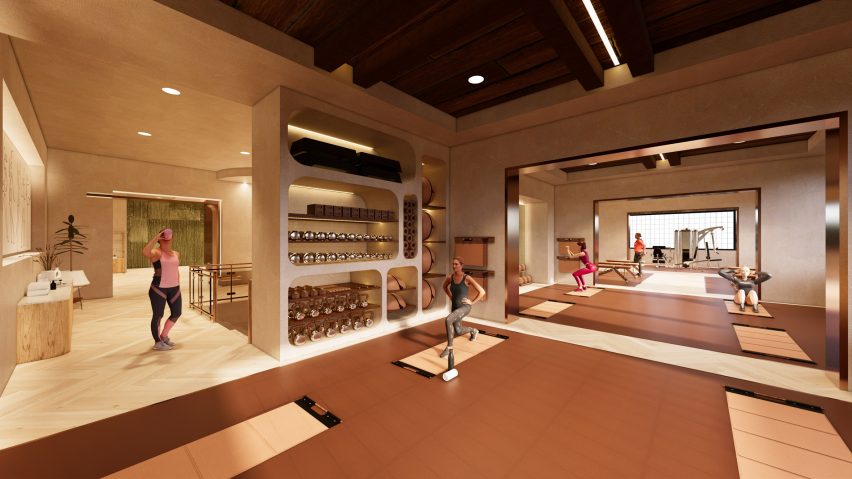
The Shift, A Women’s Gym by Alexandra Forman
“The Shift is a women’s gym that caters to a diverse range of clientele across various age groups.
“The design takes cues from the lymphatic system, offering a network of interconnected fitness zones across various levels, each emphasising progressive intensity in movement.
“Alongside a multitude of fitness classes and equipment zones, amenities such as an educational kitchen, juice bar and childcare centre contribute to cultivating a supportive and secure environment for women at any phase of their fitness journey.”
Student: Alexandra Forman
Course: Interior Architecture: Studio 5 – Graduate
Tutor: Christina Filipescu
Email: andraforma[at]gmail.com

Cattitude Café, A Cat Café by Jingchen Lu
“Cattitude Café offers a cosy haven where you can enjoy drinks and snacks while spending time with adorable cats.
“It’s a heartwarming space where rescued cats find a temporary home and are available for adoption.
“Cat lovers and potential owners can unwind, bond with the cats and maybe even find a new furry friend.
“The café also features a special foster room, ensuring every cat has a loving, safe environment.”
Student: Jingchen Lu
Course: Interior Architecture: Studio 5 – Graduate
Tutor: Christina Filipescu
Email: jlu69[at]gwu.edu
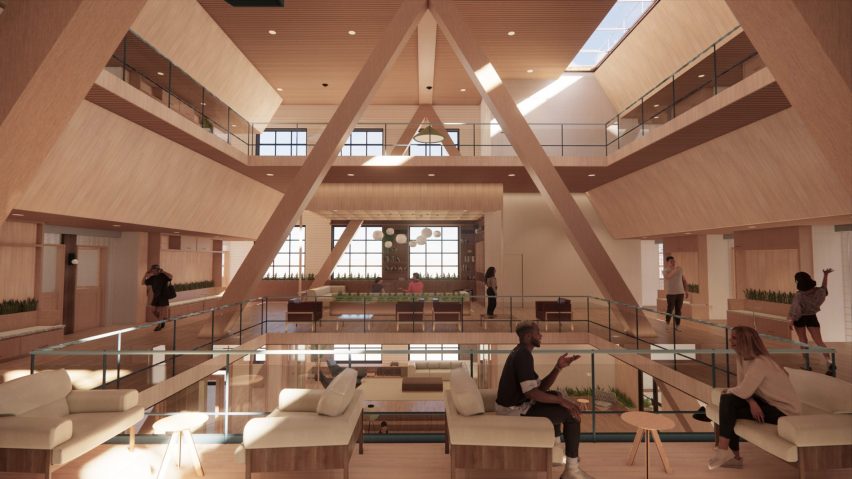
The Stoop: Modern Community Living by Maya Rao
“The Stoop is a modern co-living complex for young professionals looking to live communally and sustainably.
“The design seeks to address the growing loneliness epidemic by creating various touch points for connection and resource sharing.
“The inspiration for this design comes from the porch, a space used across cultures to connect with neighbours and neighbourhoods.
“The porch creates transitory space between shared amenities and private units, where neighbours can connect and build lasting relationships.”
Student: Maya Rao
Course: Interior Architecture: Studio 5 – Graduate
Tutor: Christina Filipescu
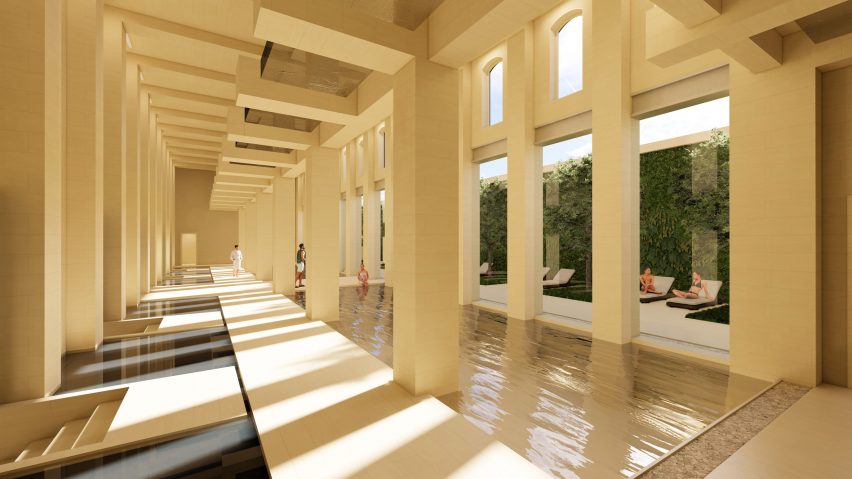
Canal: Spa & Wellness Center by Graham Mosher
“Inspired by the layout of Georgetown, Canal: Spa & Wellness Center offers a unique and thematic approach that utilises the street grid and the C&O canal for way-finding, materiality and arrangement of spaces.
“The varied atmospheres of Georgetown influence areas in the spa from the vibrancy and historic architecture of M Street to the serene and modern waterfront, lending a distinctive feel to the treatment rooms, pools and lounge areas inside the spa.”
Student: Graham Mosher
Course: Interior Architecture: Studio 5 – Graduate
Tutor: Christina Filipescu
Email: graham.mosher[at]gwu.edu
Partnership content
This school show is a partnership between Dezeen and Corcoran School of Arts and Design. Find out more about Dezeen partnership content here.

